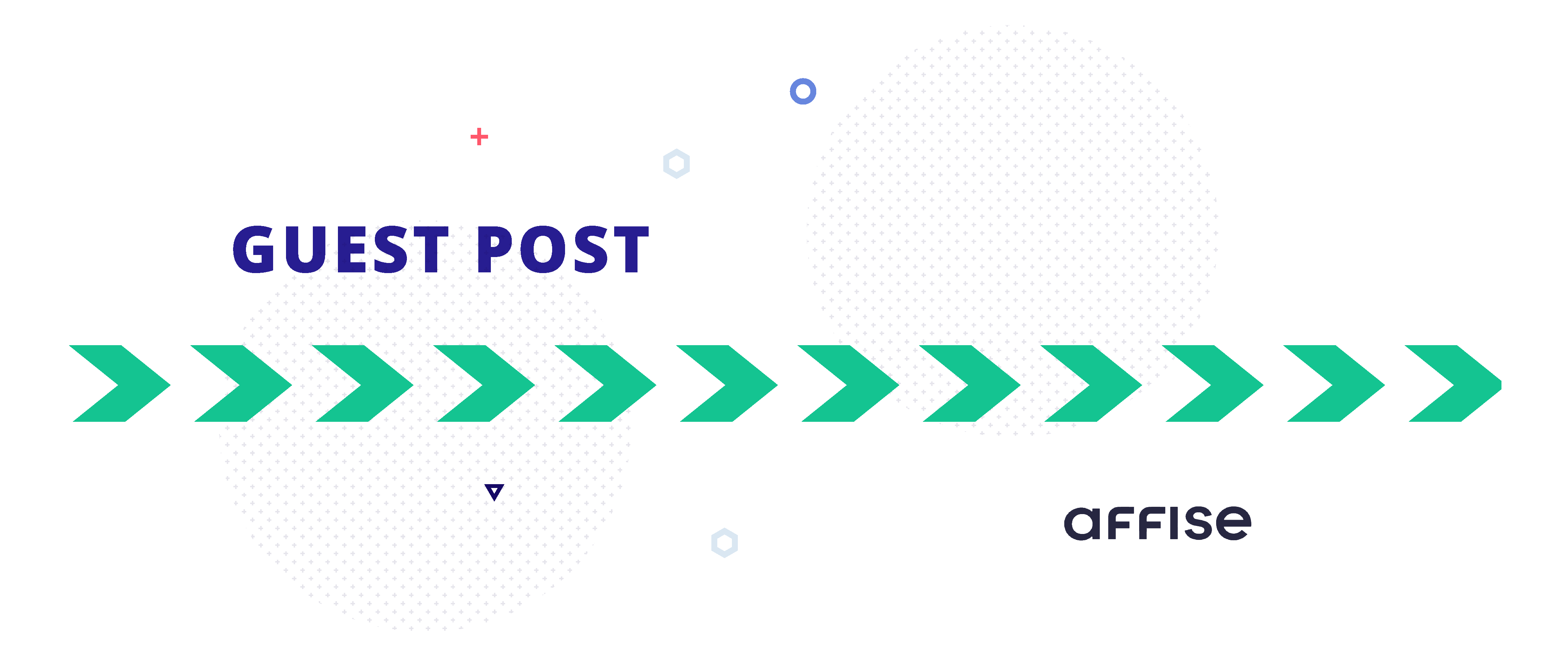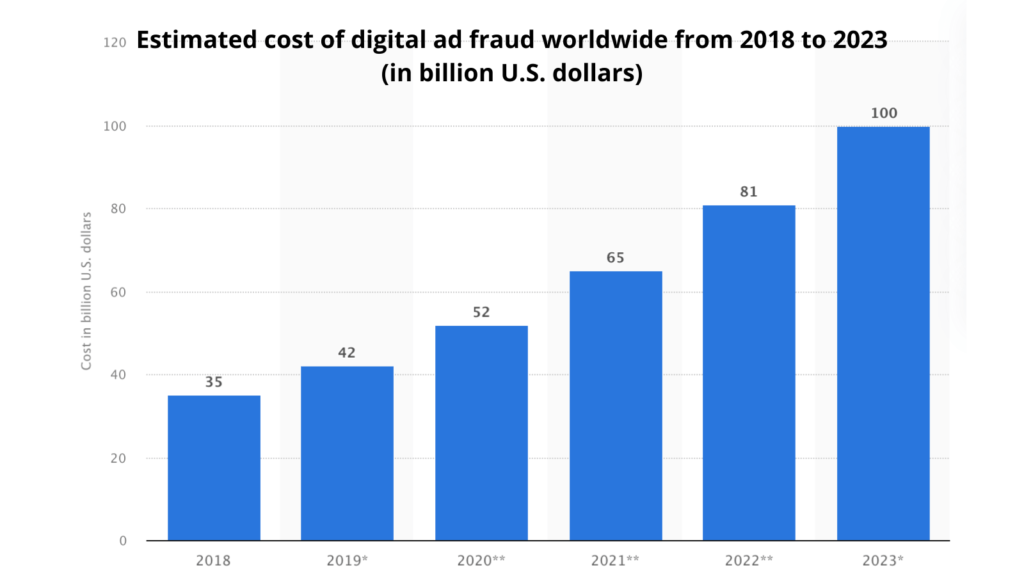| Content provided by Affise |
Digital marketing campaigns operate on exposure. And the Internet is a busy place, so making your brand stand out from the noise can be an overwhelming task.
Whether you’re looking for low-cost digital marketing strategies or investing in more expensive methods, finding the right way to promote your brand can make all the difference to the success of your digital campaigns.
And, once you’ve taken the time to perfect your campaign the last thing you want is for it to then become a victim of ad fraud.
Read on to discover what ad fraud is, and how it affects digital campaigns.

How does ad fraud work?
Ad fraudsters generally seek to achieve 1 of 2 aims:
- To redirect traffic to their sites.
- To steal from the advertising budget of your business.
In either case, this can be a costly endeavor for your business, particularly if your digital presence is only just beginning to find its footing.
As such you will want to learn about the specific malicious practices used by fraudsters.
The extent of ad fraud
What is particularly striking is just how widespread it is. Research conducted by HUMAN (formerly White Ops) found that two-thirds of corporate respondents had experienced some form of digital ad fraud in 2021.
The danger of ad fraud lies in its omnipresence. Often, the main perpetrators are organized and make big money from their malicious acts. They operate all around the world and employ various methods to achieve their aims. This means that whatever advertising route your business pursues, be it CPC or ambassador programs for brands, you will always be vulnerable to fraudsters.
Common examples of ad fraud
To help you better understand ad fraud, we have compiled a list of the most common methods that malicious actors in this space employ:
Bot views
The most basic type of ad fraud uses ‘bots’ to spoof impressions on your adverts.
A bot is simply a piece of code that, when executed, tricks a domain into thinking that it is a legitimate human visitor.
The malicious script may be performed by an infected PC or IoT device, alongside which relevant marketing data may be harvested.
This type of fraud is particularly devastating for CPM ad campaigns. That is campaigns that pay based on 1,000 impressions (views) on an advert. The rationale for these campaigns is that, if many people are exposed to your ad, there is a good chance that at least some of them will follow through and click on it.
You can imagine that the effectiveness of these ads is severely reduced when they are exposed to both viewers. If 750 out of 1,000 views on your adverts are coming from bots, that means that 75% of your budget is going to waste.
That is exactly why every advertiser should employ the most effective tools that provide increased filtering and control of potential bot traffic. Our most valuable advice is to tightly cooperate with ad exchange’s Compliance and Campaign Management Teams to exchange feedback and seek advice on targets and optimization.
Click farming
A slightly more complex form of ad fraud involves ‘click farming’. This is when fraudsters pay low-wage workers in developing nations to engage with your advert. That means that it may accrue hundreds of likes from fake accounts, making it appear to be a popular post.
However, this high engagement is merely an illusion, as none of these accounts will go on to provide the desired conversion.
This form of ad fraud is intended to abuse CPC ad campaigns. These campaigns pay every time someone clicks on your advert, making them a ripe target for click-farm fraudsters.
Affiliate referral theft
Do you think that click farming was complex? Trust us, you’ve seen nothing yet…
Affiliate referral theft is an even sneakier form of ad fraud. This method involves fraudsters stuffing your browser with cookies (often via malware such as XSS scripts).
The reason? Well, cookies tell the website the source of its traffic. That means that site visitors can be redirected from legitimate affiliate sources. Therefore, fraudsters may collect the payment from the referral software program, when it was actually intended for the affiliate marketer.
This means of ad fraud is damaging for CPA ad campaigns, where the business pays for chosen conversion type.
Programmatic advertising abuse
Without a trusted ad performance platform, your campaigns may be exposed to some untrustworthy or undesirable sources, such as piracy and porn websites. Stressing how bad that would be for your brand’s safety is like stating the obvious. Instead, it’s always better to see a trusted sources portfolio and consult it with ad exchange platform representatives.
We highly recommend using a whitelist of trusted and optimized publishers for your adverts to be displayed on.
Domain spoofing ad fraud
Domain spoofing involves masking the true identity of a domain by making the URL appear similar to a trusted website. They may well use similar images and color schemes to the real website, possibly using the best free stock photo sites to look legitimate. Marketing departments that are tricked by this spoof will often be happy to display their ad on these so-called trusted sources.
The success of this fraud model plays into a weakness of the whitelist defense mentioned above. In this case, spoof websites can penetrate the whitelists of campaigns. That means that marketing teams will be none the wiser about the financial harm their campaigns are causing to their business.
Why is ad fraud harmful to your digital campaigns?
1. It is costing your business 💵💵💵
Every penny that goes to fraudsters is a penny stolen. You could have spent that better on a legitimate advertising campaign.
In fact, globally, ad fraud is expected to cost advertisers $100 billion in 2023.
2. Your product inventory may be inflated
High engagement or ‘actions’ performed in your ad campaigns may set unrealistic sales targets. This can create problems down the line if you order too much stock.
3. Campaign analysis will be less reliable
You will also be deprived of any meaningful statistics to draw from your ad campaigns. Since you’ll have little idea how many impressions were legitimate, you won’t have any insight into what has or hasn’t worked.
Looking to integrate your ad campaign data into a simplified API-based dataset? This RDD Programming Guide will help bridge the gap between the various sources of your advertising data.
4. Fraud is a positive feedback cycle
We’ve established that ad fraud is a lucrative business. Now consider that for every dollar stolen, fraudsters can invest this into developing new, more advanced methods to steal your ad money.
5. It invites government regulation
As these scams grow in popularity, the damage they cause also increases. This puts pressure on governments to enforce overreaching regulations that may come to haunt your business. Rather, you will want to show the state that your industry is capable of self-regulation.
 Image sourced from setupad.com
Image sourced from setupad.com
Top tips for preventing ad fraud
Use anti-fraud tools
Just as there is a market for ad fraud, there is also a market for businesses looking to fight fraudsters. This comes in the form of services that aim to detect and combat the various forms of ad fraud. You will find this useful as you scale up your digital campaigns.
Some of the biggest names currently are HUMAN (White Ops), Appska, Virus Positive Technologies, and mFilterIt. These services undergo continuous performance testing to ensure a high-quality application in the face of sophisticated cyber criminals.
Require full transparency
A basic rule of thumb is to only work with advertisers that operate under absolute transparency. That means that you should be given an exhaustive list of domains on which your ads will be hosted.
You may consider whitelisting trusted sites to avoid falling victim to a programmatic advertising fraudster. Bear in mind that domain spoofers may use this to ‘slip through the net’, so certainly double-check all your whitelisted websites!
Trust only the proven ad performance agencies
No matter if you represent a brand, or if you are an affiliate marketer – you need a reliable partner in business to make sure all the dangers are minimalized. Well-designed filtering of targets, seasoned advisors dedicated to the ad performance platform, and a lot of other aspects make up for a safe advertising environment.
Switch up your advertising game
Ad fraud is so pervasive in the industry, that many businesses are now looking to widen their advertising portfolio and to find alternative forms of digital marketing. Rather than paying directly for impressions, concepts such as ‘natural growth’ or ‘word of mouth’ are valued in higher regard.
This might mean working with a reputable ad exchange company or aiming to score testimonials from customers’ blogs or social media pages. You could even explore partnership advertising as a way of working alongside trusted business partners.
Conclusion
By now, you should have an appreciation of the threats associated with ad fraud. Hopefully, you have a better idea of how these fraudsters act and what you can do to protect your business’s campaigns.
The bottom line is, that advertising fraud gives a bad name to the marketing industry, harming us all. Thankfully, as we develop technologies to fight against cyber criminals, the threat will one day become a thing of the past. Until then, it is best to inform your marketing department of the dangers of ad fraud, so they may recognize and action vulnerabilities.
| Content provided by Affise |
About the author:
Sam O’Brien – Chief Marketing Officer, Affise
Sam O’Brien is the Chief Marketing Officer for Affise—a Global SaaS Partner Marketing Solution. He is an SW3 expert with a product management and design background. Sam has a passion for innovation, growth, and marketing technology. Sam has also written for other domains such as Brightpearl and Marketing AI Institute. Here is his LinkedIn.
Łukasz Pośpiech



